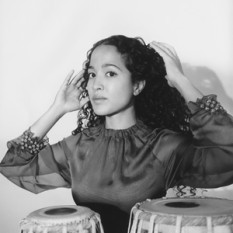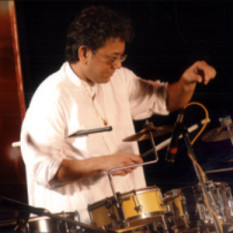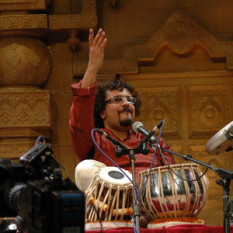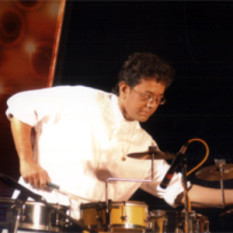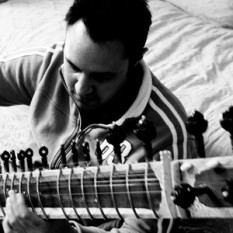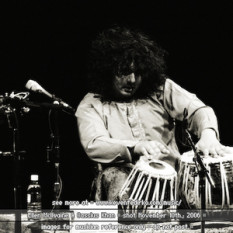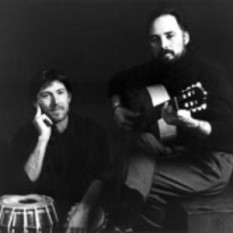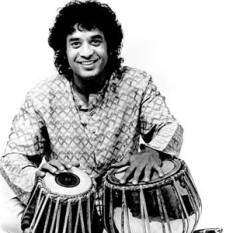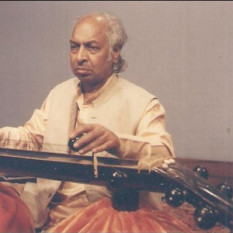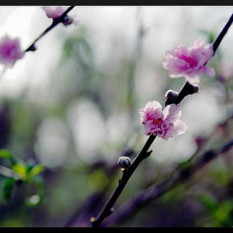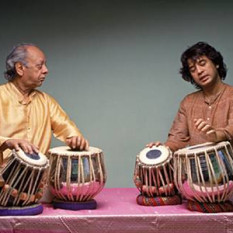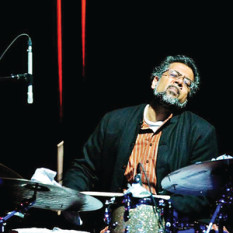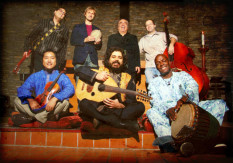The tabla (Hindi: तबला, Telugu: తబలా, Urdu: تبلہ tablā) is a popular Indian percussion instrument used in the classical, popular and religious music of the Indian subcontinent and in Hindustani classical music. The instrument consists of a pair of hand drums of contrasting sizes and timbres. The term tabla is derived from an Arabic word, tabl, which simply means "drum".
The history of this instrument is at times the subject of heated debate. The most common historical account credits the 13th century Indian poet Amir Khusrau as having invented the instrument, by splitting a Pakhawaj into two parts. However, none of his writings on music mention the drum (nor the string instrument sitar). Another common historical narrative portrays the tabla as being thousands of years old, yet this is mere conjecture, based on slipshod interpretations of iconography. Reliable historical evidence places the invention of this instrument in the 18th century, and the first verifiable player of this drum was Ustad Sudhar Khan of Delhi.
The term gharānā is used to specify a lineage of teaching and repertoire in Indian classical music. Most performers and scholars recognize two styles of tabla gharana: Dilli Baj and Purbi Baj. Dilli (or Delhi) baj comes from the style that developed in Delhi, and Purbi (meaning eastern) baj developed in the area east of Delhi. They then recognize six gharānās of tabla. They appeared or evolved in the following order, presumably:
1. Delhi gharānā
2. Lucknow gharānā
3. Ajrara gharānā later followed by
4. Farukhabad gharānā
5. Benares gharānā
6. Punjab gharānā
Other tabla performers have identified further derivations of the above traditions, but these are subjective claims. Some traditions indeed have sub-lineages and sub-styles that meet the criteria to warrant a separate gharānā name, but such socio-musical identities have not taken hold in the public discourse of Hindustani art music, such as the Qasur lineage of tabla players of the Punjab region.
Each gharānā is traditionally set apart from the others by unique aspects of the compositional and playing styles of its exponents. For instance, some gharānās have different tabla positioning and bol techniques. In the days of court patronage the preservation of these distinctions was important in order to maintain the prestige of the sponsoring court. Gharānā secrets were closely guarded and often only passed along family lines. Being born into or marrying into a lineage holding family was often the only way to gain access to this knowledge.
Today many of these gharānā distinctions have been blurred as information has been more freely shared and newer generations of players have learned and combined aspects from multiple gharānās to form their own styles. There is much debate as to whether the concept of gharānā even still applies to modern players. Some think the era of gharānā has effectively come to an end as the unique aspects of each gharānā have been mostly lost through the mixing of styles and the socio-economic difficulties of maintaining lineage purity through rigorous training.
Nonetheless the greatness of each gharānā can still be observed through study of its traditional material and, when accessible, recordings of its great players. The current generation of traditionally trained masters still hold vast amounts of traditional compositional knowledge and expertise.
This body of compositional knowledge and the intricate theoretical basis which informs it is still actively being transmitted from teacher to student all over the world. In addition to the instrument itself, the term tabla is often used in reference to this knowledge and the process of its transmission. .



